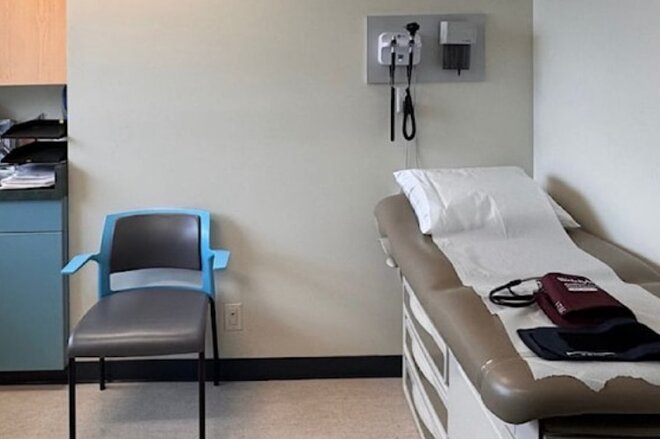02/02/2025, 23:38
End date changed to align with current known info on final date for comments
More info added to tell people what they can do to support the campaign
Facebook page link added
Collection target amended
Added information about industrial noise, work on Saturdays, and rezoning of residential land during a housing crisis
Added information about donations to Open Petition.
Increased the collection target to 500.
Amended a typo under Reason section.
Neue Begründung:
1. Part of the land for the proposed expansion is currently zoned as Country Residential, which does not allow mining/a gravel pit. If granted, we estimate there would be 1 gravel truck every 5 minutes, 7am-7pm Mon-Friday for the next 50 years, passing within a few metres of many Hope residents' homes. The application also details that work will be carried out on Saturdays "as needed". Additionally, if the application is approved, it means re-zoning critical residential land during a time of a housing crisis when we need more homes, not a gravel pit expansion.
2. The current proposal would allow all gravel trucks to travel along Kawkaka Lake Rd towards town. 1 gravel truck every 5 minutes between 7am-7pm, Monday to Friday for 50 years is a conservative estimate; the gravel pit ownerapplicant has exceeded the permit allowance every year for the last 4 years. In 2022, for example, the owner took over 35,223 loads out of the pit, when the permit was for 3300 loads. 35,223 loads means more than 10 times over allowance, which is 70,446 gravel truck journeys in 2022 (since the trucks have to travel to, and then from the mine). Kawkawa Lake Rd goes through residential areas, and the trucks would also be travelling past the lake and vacation spots like the Coquihalla Campground. For residents in these areas, the effect of that much heavy traffic is noisy, disruptive, and incredibly dusty. The trucks also have a history of not securing their loads properly, leading to basketball-sized rocks falling out of the trucks and onto the road, presenting a danger to road users. The fact that the pit owner consistently takes 4,so 5, 6, 7 timesmany more loads from the pit than the permit allows shows there is no oversight or accountability.
3. The land proposed for the expansion was documented by the government as Critical Habitat for Spotted Owl (a protected species) and Conservation Area for Mountain Beaver. This would mean it couldn't be logged or mined. The environmental report commissioned for the permit application found that this land had been extensively clear cut within the last 10 years. The report therefore concludes that the land is now suitable for mining, since it is no longer suitable for the protected species. There are no questions being asked with regard to how this Critical Habitat came to be clearcut when it was protected.
4. There is an alternative route for an access road to the mine that could be built by the applicant, which would mean that trucks would enter and exit the road not far from Highway 5. This would mean that no trucks have to travel along Kawkawa Lake Rd, and it would cut all residential areas out offrom the equation. The owner knows about this route, it has been informally approved by the Ministry of Transport, but it is seemingly more costly for the pit ownerapplicant and it has not been mentioned in his application. If the mine expansion is approved (which we oppose), we are asking that Hope Ready Mix trucks be mandated to use this route. The route actually proposed in the application goes closely past a number of residents' driveways, and then through residential areas towards town. This proposed route does not meet road safety guidelines for "sightlines" and so poses a danger to road users. There is also the considerable wear on our roads, which taxpayers would be paying for. Hope District and councillors noted the heavy wear on roads from gravel trucks visiting the existing pit, and the burden of additional, frequent ditch-cleaning (at Hope taxpayer expense) to deal with silt from the mine being deposited in the surrounding area.
5. Tourism is the number 1 industry in Hope, and it focuses on the natural beauty we have here. When approaching Hope from Highway 1 coming from the west, the first sign of Hope is the gravel pit. The permit application more than triples the size of the pit and it would look even worse than it does now. It is already visible from most parts of Hope, and from afar. Aside from decimating the natural beauty of our area, the gravel pit is incredibly destructive to our natural environment and leads to:-excess dust which reduces air quality and impacts our health,-industrial noise from mine operations impacts our health, such as the noise from the pit experienced for months in 2024, which contravened Hope's Good Neighbour Bylaw-the application would necessitate a logging licence to remove yet more trees from our environment-potential damage to homes from blasting, such as that documented by a home-owner living close to the Pit.
The gravel pit expansion provides very little benefit for Hope residents, but clearly many, serious disadvantages, and it does not align with the Hope Official Community Plan.
6. Despite anecdotal evidence that mining permit approvals are almost impossible to stop, there are numerous examples of the concerns of residents prevailing, including a nearby gravel pit application in the Agassiz/Harrison area that was subsequently turned down by the Ministry on the basis of the same points raised above.
New deadline: 03.03.2025
Signatures at the time of the change: 60



